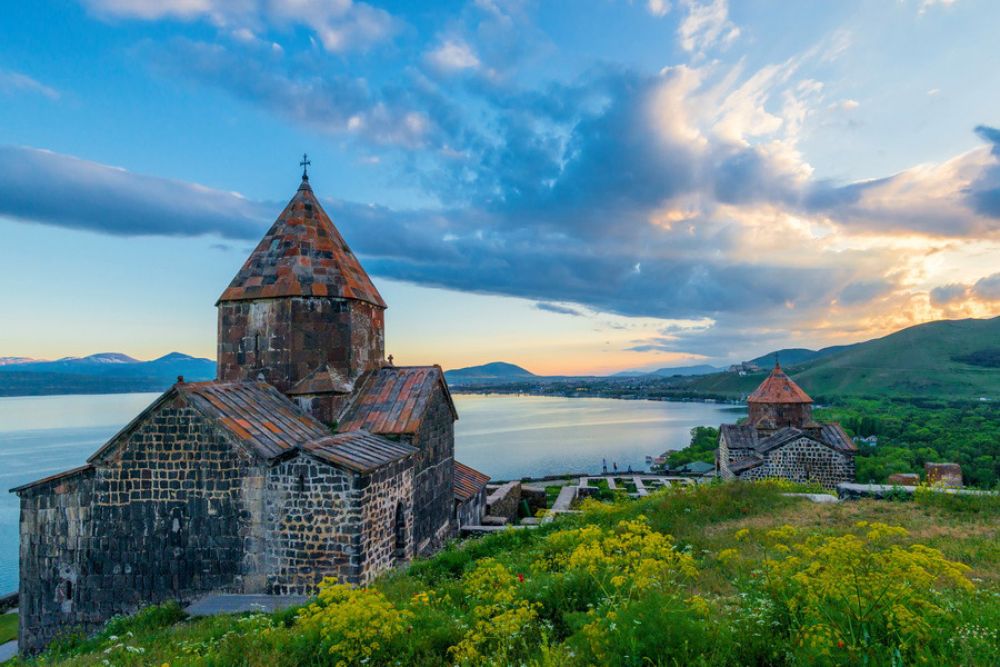

Perched on the northwestern shore of Lake Sevan in Armenia lies the historic Sevanavank Monastery, a testament to Armenia's rich ecclesiastical heritage. Established in the 9th century by Princess Mariam, the daughter of Ashot I, the monastery has been both a sacred place of worship and a fortified retreat over the centuries.
While the monastery itself dates back over a millennium, tourism to Sevanavank began to flourish much later. Access to the site was considerably improved during the Soviet period when Armenia was part of the USSR. The 20th century saw significant developments in the area, making it more accessible to visitors from other Soviet republics and, eventually, foreign tourists. The construction of a railway and a road that circled the lake enabled more people to visit the breathtaking Sevanavank Monastery.
Following Armenia's independence in 1991, the country's tourism infrastructure gradually developed. Sevanavank became one of Armenia's key attractions, drawing in travelers with its cultural significance and natural beauty. The monastery's location on a peninsula (formerly an island before the water level dropped) offers majestic panoramic views of Lake Sean and the surrounding landscapes, which further adds to its allure.
In the 1950s, the monastery underwent significant restorations under the guidance of architect V. Sahinyan. While preserving the authenticity of Sevanavank, these efforts made the site more welcoming and paved the way for it to become a prominent destination for historical tourism in Armenia. Thankfully, the two churches of Surp Arakelots (Holy Apostles) and Surp Astvatsatsin (Holy Mother of God), largely survived the test of time and human intervention, and have continued to captivate visitors.
In recent years, tourism trends in Armenia, and specifically at Sevanavank, have evolved. Travelers are increasingly seeking authentic cultural experiences, and Sevanavank provides just that. Hand-in-hand with its historical allure, the monastery offers insights into Armenian religious practices, with many tourists timing their visits to coincide with traditional Armenian Apostolic Church services.
Eco-tourism and adventure tourism are also on the rise, with visitors combining their trip to the monastery with activities like hiking, swimming, and sailing on Lake Sevan. Local Armenian cuisine, found in restaurants near Sevanavank, gives tourists a taste of the country's gastronomic delights.
Social media has played a significant role in the marketing of Sevanavank as a tourist destination. Picturesque views, shared across platforms like Instagram, have attracted a younger demographic eager to explore and share their own experiences of Armenia’s iconic landmarks.
Today, Sevanavank Monastery remains a must-visit for anyone traveling to Armenia. The government continues to emphasize the importance of tourism and invests in infrastructure and preservation efforts to maintain this invaluable site. With a harmonious blend of natural beauty, spirituality, and historical significance, Sevanavank Monastery stands as a cornerstone of Armenian cultural tourism, inviting visitors from all corners of the globe to discover its ancient wonders.